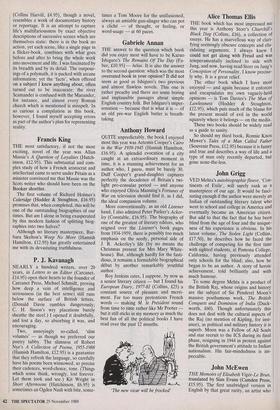Philip Glazebrook
ON account of my want of specialist knowledge of the period, I extracted from Richard 011ard's Clarendon and His Friends (Hamish Hamilton, £15) rather the satisfaction of a novel than the instruction of a work of history: that is to say, I was enthralled by its subtle interweaving of a group of personalities with the train of revolutionary events, by the development of Clarendon's own character, and by the way his faults were punished at last by his being broken on the wheel of history in a climactic fate which Tolstoy might have designed for him. The book is seasoned, too, with the comments of a mordant and watchful intelligence brooding above his creatures and their world in the manner of a novelist: of Clarendon's daughter's con- version to Catholicism, 011ard says, 'The political manoeuvres of the House of Tudor did not seem to her a credible instrument for the operation of the Holy Spirit'.
Life, A User's Manual by Georges Perec (Collins Harvill, £4.95), though a novel, resembles a work of documentary history or reportage. It is an attempt to capture life's multifariousness by exact objective descriptions of successive scenes which are themselves static: there is in the book no action, yet each scene, like a single page in a flicker-book, combines with what goes before and after to bring the whole work into movement and life. I was fascinated by its breadth and by its detail. The outpour- ings of a polymath, it is packed with arcane information; yet the 'facts', when offered on a subject I knew anything about, often turned out to be inaccurate: the river Scamander is confused with the Maeander, for instance, and almost every Roman church which is mentioned is misspelt. In so curious a compilation as this book, however, I found myself accepting errors as part of the author's plan for representing reality.











































































 Previous page
Previous page